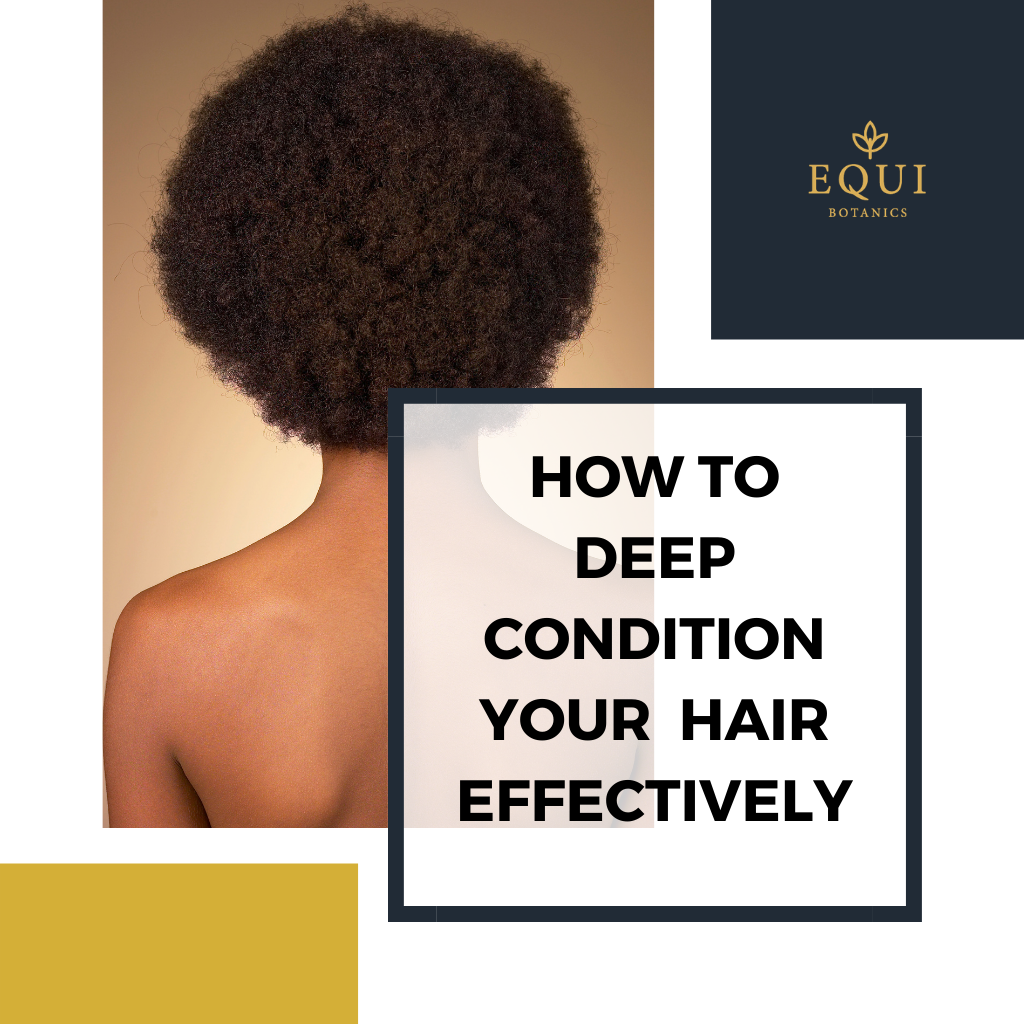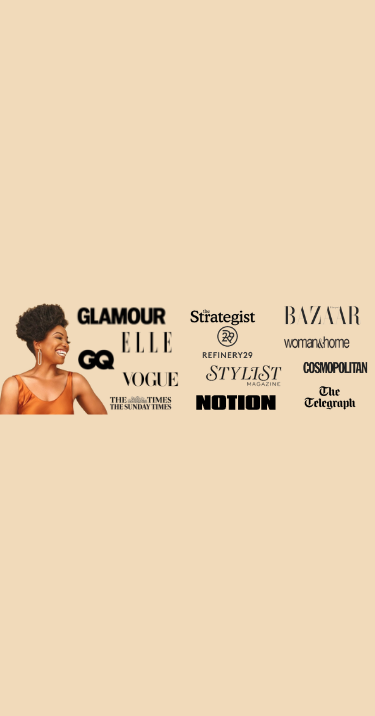
When I first started learning to take care of my natural coils, deep conditioning was one of the processes I didn’t really understand. There were so many ways to get it wrong and for a long time into my natural hair journey, I did. Hopefully, I can help you avoid any of the issues I was making and give you some crucial pro tips which can make a big difference to your hair care.
Firstly, let’s look at the fundamentals.
What Does Deep Conditioning Do?

Deep conditioning is the application of a thick and restorative formula to your hair, using steam or moist heat to encourage the penetration of the formula into your hair. The goal is to repair dry, damaged hair by rebuilding the hair’s molecular layer and replenish moisture, encouraging thicker, softer and revitalised hair.
Do you want to reach your hair goal by the end of the year? If you don’t add deep conditioning to your regimen on a regular basis, then you probably won’t, unless you’re one of the luckies* who can do just about anything to their hair and it still grows. With that in mind, we’ve put together a step-by-step guide on how to deep condition your hair, followed by some handy FAQs, too!
Step-By-Step Guide:
1. How to Use Deep Conditioner: Section Your Hair
First thing’s first, you need to section your hair so that you can concentrate on a batch at a time. The best way to section your hair is to use a wide-toothed comb and just split your hair into four or five sections, just to make it more manageable. Depending on your hair, you might naturally be able to split it into more sections, or a couple fewer.
So long as you’re able to partially section or partition it, then that’s fine - it just makes your life easier! If you haven’t got a comb, then you can use your fingers to separate your hair into chunks, too! Separating your hair in this way also makes it much easier to wash, too, which is the next step.
2. Deep Condition Wet Hair
You should wash your sectioned hair before deep conditioning it. Once washed, your hair should be damp and ready to apply the deep conditioning formula. Whatever product you’re using, make sure to thoroughly read any instructions before application! Then, apply the treatment formula - our Babassu Oil Treatment Masque is highly recommended - from ends and then to the roots. The ends of your hair are much more in need of reconstructive conditioning, so that’s why we start with them.
3. Tie Up Your Hair Once You’ve Applied the Formula
Tie up or use a hair clamp for each section once application is complete. When your whole head is done, ensure your ends are exposed to the steam, putting on a plastic cap which is the only thing that should come between the ends and the steam. Alternatively, as we’ll come onto, you can use a store-bought steamer, too.
4. How Long should you leave Deep Conditioner in your hair
A deep treatment is advisable to be left in your hair from as low as five minutes to about thirty minutes. If your hair isn’t too dry, then you don’t need not to stay under the steamer for as long as, say, forty minutes - in fact, fifteen to twenty minutes will do.
Some naturally curly ladies who like very soft hair opt for a longer period of deep conditioning. To reiterate, your hair should be washed clean before applying the deep conditioner so that nothing gets in the way of the nutrients.
Deep Conditioning Commonly Asked Questions
Steam or Heat for natural hair?
You may think all heat is damaging to your natural curls but steam (which is wet or moist heat) is required in your natural hair care regimen. Steam can be obtained from a store-bought hair steamer. They usually need topping up with water. When the steamer is plugged into electricity, the water boils and produces the steam for your hair.
Alternatively, you can cover your hair with a plastic shower cap - the flimsy light ones - and then tie it up with a towel. This will usually produce some body heat which in turn, steams your hair. Alternatively, you can pour some boiling water in your shower cap (not too much) and then pour it out and place on the cap, to get some added steam.
What Deep Conditioner/Treatment/Mask?
You want to ensure the formula you apply for the deep conditioning process is a restorative one, not a damaging one. I used to think carrier oils could be substituted for deep conditioning but this is an Oil Treatment which plays a totally different but essential job to your hair care - another blog post coming up. There was also a time when I used a popular leave-in conditioner as a deep treatment to zero results.
How often should you deep condition your hair?
A deep conditioner should have moisturising low molecular fatty acids and hydrolysed protein ingredients that will treat damaged cuticles, improve the condition of your hair and provide nutrients.
The richness of the deep treatment usually means it can be used no more than once a week. Homemade recipes which include very ripe avocados, blended with honey and castor oil do not have low molecular fatty acids to penetrate the hair shaft.
They may make your hair feel softer from the outside, but they do little to replenish the strength from inside out, reducing breakage. When I was formulating our Babassu oil, I researched the oils and butters that, when blended and crafted to a level of perfection, would penetrate the hair shaft easily and restore damaged hair quickly and for longer. So that you would get the maximum benefits from the Babassu oil.
How ‘Thirsty’ is Your Hair?
Determining how thirsty your hair is before you deep condition is an absolute must. I’ve been known to ignore my hair and dive into the wash day process which led to mistakes. If your hair is extra dry and weak, you should use a complex formula and spend a bit more time under the steamer. For example, you may have been blow-drying for special occasions, or you may swim or work out regularly.
All these activities introduce dryness to the hair and require more intensive or more regular deep treatment sessions. With our Babassu oil, a weekly deep conditioning session is optimum and if you have damaged hair from colouring, swimming or blow-drying, you should see hair bouncy and restored after at least two sessions. Trying to get into a routine can really help keeping on top of it all.
Can You Leave Conditioner in Your Hair Overnight?
Some people opt to do a 24 hour deep conditioning treatment and sleep overnight with their hair wrapped up. I only recommend this on a one-off if your hair is damaged from heat or you want to correct your porosity from low or high to the normal medium.
The Babassu Oil - due to its intricate formulation - is also very effective at correcting porosity.
How to Deep Condition Curly Hair?

There are no major differences between deep conditioning for straight and curly hair; in fact, deep conditioning is predominantly used by people with curly hair. That’s because curly hair tends to get drier than other hair types, hence the need for the greater moisture replenishment that deep conditioning offers. So, if you’re looking to deep condition your curly hair, just follow the steps outlined earlier and below:
1. Section Your Hair
2. Deep Condition Wet Hair3. Tie Up Your Hair Once You’ve Applied the Formula
4. Leave for the necessary time outlined
Can I Deep Condition With a Regular Conditioner?
You can, but it won’t give you the same, long-lasting effects that a purpose-designed deep conditioner will give you. It might replace some of the moisture that’s been lost from your hair, but not anything like on the same scale that deep conditioning products will.
How to Deep Condition Natural Hair?
Again, deep conditioning is actually predominantly used by people with natural hair (though it can be used by people who have hair extensions, for instance - in fact, we’d recommend it to get the longest life out of your extensions) so when it comes to how people with natural hair should deep condition it? Read the guide above!
Our Concluding Thoughts on Deep Conditioning Hair Treatment?
Ever since we made deep conditioning a regular part of our regimen, our hair has become shiny, less prone to breakage, bouncy, and more importantly, we retain the length we gain.
I hope this helps!




